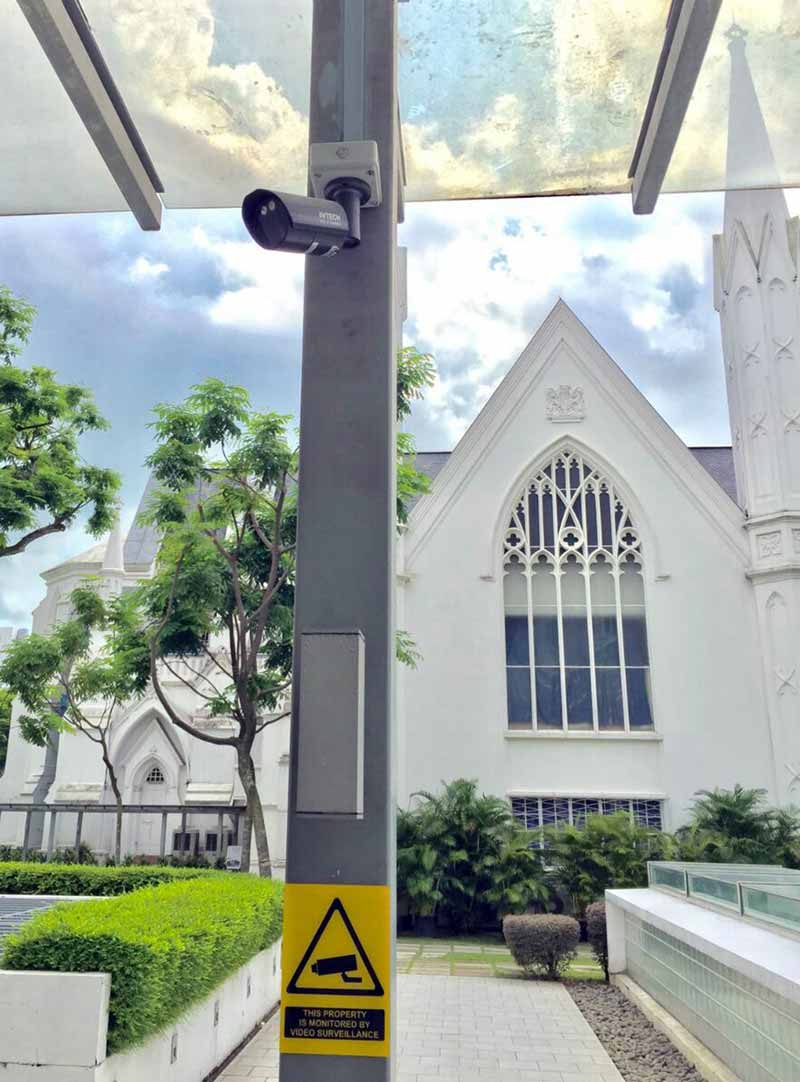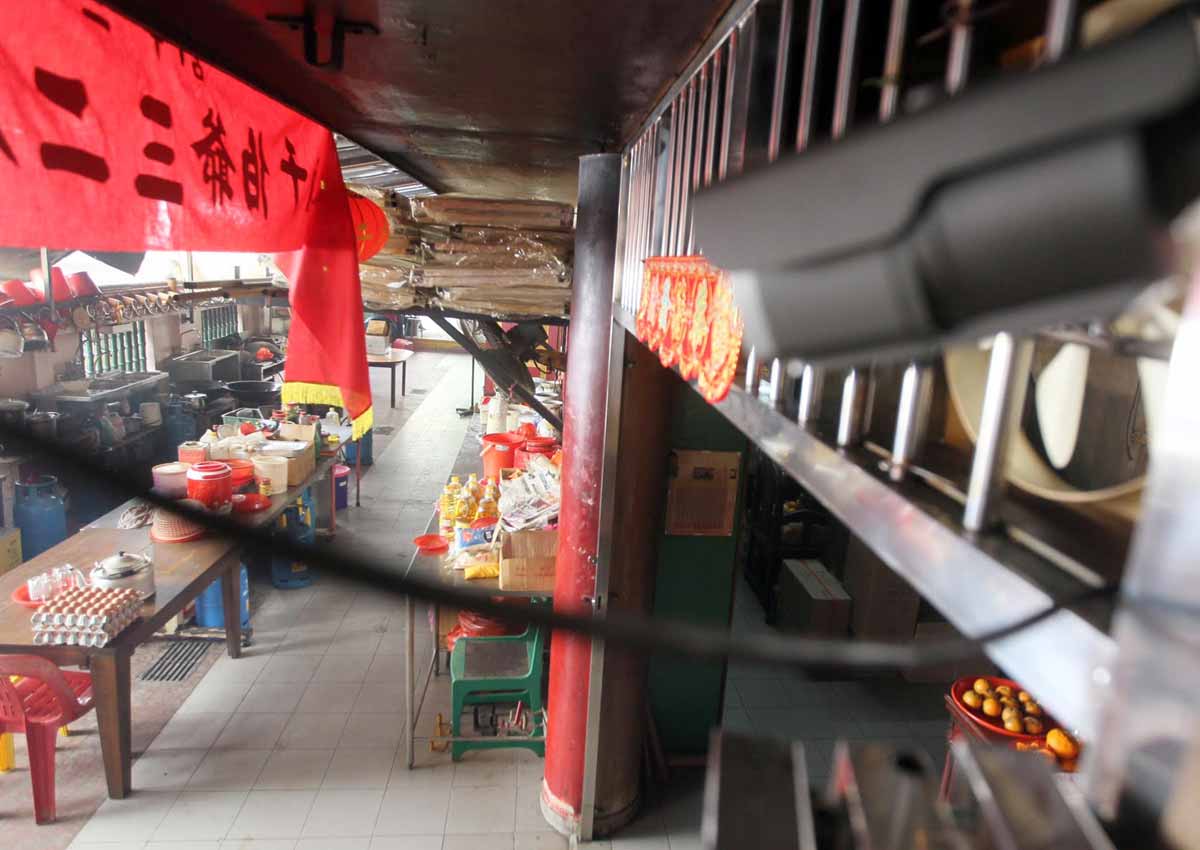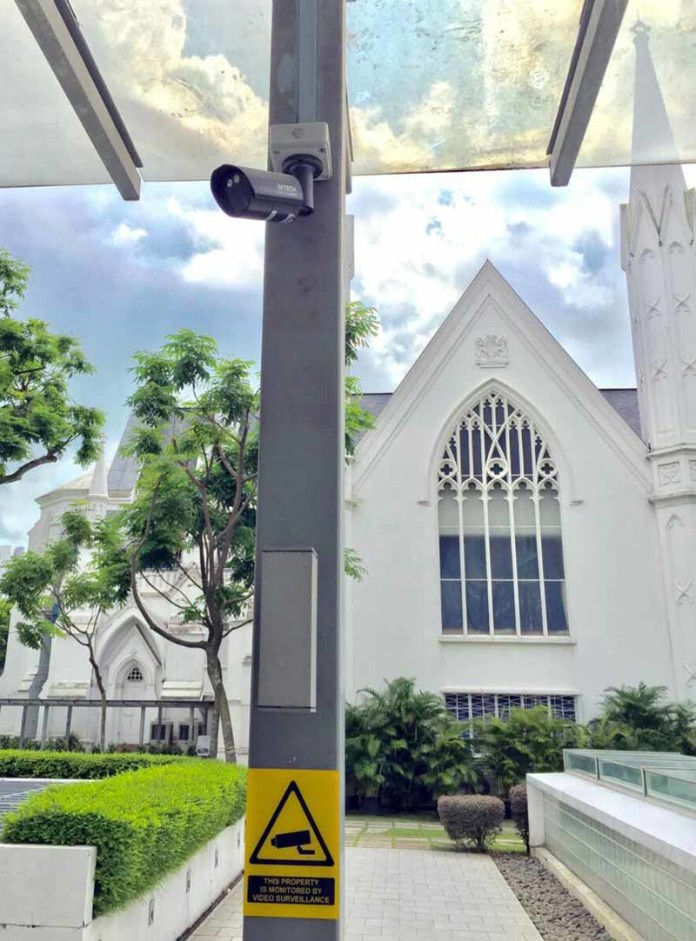For more than 10 years, the e-mails that Roman Catholic church volunteer Philip Wong received were mostly about his parish church’s activities, like planning funfairs and feastdays, or about announcements by the archdiocese.
But on Thursday, the 66-year-old was surprised to receive an e-mail on how to prepare for a terrorist attack.
The PowerPoint presentation slides were from the Roman Catholic Archdiocese of Singapore, the governing authority of the Roman Catholic church in Singapore.
It has an initiative to form an Archdiocesan Emergency Preparedness Taskforce to train and equip members with basic emergency skills and to improve standard operating procedures for emergencies.
In recent years, terrorists have been attacking places of worship.
Mr Wong, who has been a volunteer for more than 10 years at St Anne’s Church, told The New Paper: “Times have changed. Because of the threat of terrorism, we have to be more aware.”

VOLUNTEERS
Other Roman Catholic churches, including the Church of St Teresa at Kampong Bahru Road and The Church of the Risen Christ in Toa Payoh Central, were also calling for volunteers with experience in fire-fighting and emergency first aid.
And the churches are not the only religious organisation to be ramping up security.
Mosques, which are fitted with closed-circuit television cameras, are secured and locked after midnight, said the Islamic Religious Council of Singapore (Muis).
Last month, the Hindu Endowments Board told The Straits Timesthat its temples have security measures to ensure the safety of their devotees.
These measures are in line with SGSecure, a national movement launched by Prime Minister Lee Hsien Loong in September to increase the public’s preparedness in emergency situations such as a terrorist attack.
SBF’s chief executive Kua Soon Khe told TNP that it has been working with the temples and sharing information about SGSecure with them.
“We are helping to disseminate and translate information on safety protocols to the temples, from emergency evacuation plans to theft prevention measures,” he said.
He added that security is now a national and global challenge and requires the awareness and involvement of every citizen.
“With the collapse of the Islamic State in Iraq and Syria (ISIS) in the Middle East and many ISIS fighters returning to South-east Asia, we have to heighten our awareness for threats in the region,” said Mr Kua.
“The threat is very real. It’s not a matter of ‘if’ but ‘when’.”
“The Government has been sending messages about the threat of terrorism,” he said.
“Accordingly, we tell our members that they should be building networks within their own communities.
“The question is how we communicate if something happens. We hope there won’t be any attack, but if there is, we should stand together – that is the most important thing.”
Some places of worship said they already had security in place.
RESPONSE PLANS
Director of mosques at Muis, Mr Mohd Helmy Isa, said mosques were plugged into their neighbourhood and grassroots organisations, and have crisis response plans for emergencies.
“We view threats as real and serious as the safety of our congregants and children is our upmost priority,” he said.
“Threats do not affect only the Muslim community but the nation at large.
“We will remain vigilant and united with all Singaporeans and continue to strive, stay resilient and strong.”
St Andrew’s Cathedral’s general manager Kenneth Ng said it has had additional cameras and guards in place since the 9/11 attack in the US. It has also engaged a third-party firm to do a security review this year.
These measures have increased the cathedral’s security budget, said Mr Ng, but “it’s necessary”.
‘Security crucial to religious harmony’
Singaporeans The New Paper spoke to had mixed reactions to the increased security at places of worship.
Madam Chen Yi Fang, 50, who goes to Ubin Thai Buddhist Temple, told TNP that the close-circuit television cameras, coupled with alert temple employees, gave her a sense of security.
She said: “People think temples are supposed to be safe places, but that is quite wrong. Those praying are responsible for their own safety.”
Others who welcome the increased security felt that a terrorist attack could be harmful to the racial and religious harmony in Singapore.
Mr Bryan James Francisco, 20, a civil servant and parishioner at St Anne’s Church, said: “With Singapore taking pride in its racial and religious harmony, security is important to ensure that it remains that way.”
Mr Muhammad Faiz, 19, who goes to Masjid Al-Iman Mosque, said he is not worried because Singapore has a cohesive society and the various religious groups are not alone in combatting terrorism.
“I feel as though when I pray in a mosque, people outside it would help keep a lookout,” he said.
Three regulars at the Kwan Im Thong Hood Cho Temple on Waterloo Street said they did not feel threatened by terrorism.
One of them, who wanted to be known only as Madam Tan and who is in her 50s, said she trusted the authorities to keep the country safe.
Mr Kenneth Sum, 19, a parishioner at St Anne’s Church, however, felt conflicted about the increased security at churches.
While he admitted security is crucial, the Nanyang Polytechnic student said he would not feel at peace if he saw armed police at church.
Attacks on places of worship
NOVEMBER 2016
Four children were hurt after a church in Samarinda, East Kalimantan, Indonesia, was attacked on Nov 13. A two-year-old later died of her injuries.
Police said they had arrested a man wearing a T-shirt with the words “jihad” on it and are looking for his accomplice who fled.
Samarinda police chief Setyobudi Dwiputro said the suspects were on a motorcycle when they threw what was believed to be a low-grade Molotov cocktail or homemade bomb.
SEPTEMBER 2016
A suicide bomber killed at least 23 people and wounded dozens of others as they attended Friday prayers at a mosque in Pakistan on Sept 16.
The bombing took place in the village of Butmaina in the Mohmand tribal district bordering Afghanistan, where the army had been fighting against Taleban militants.
AUGUST 2015
A small but powerful bomb packed with ball bearings killed 20 people, including a 34-year-old Singaporean woman, and wounded more than 100 others when it ripped through the Erawan Shrine in Bangkok on Aug 17.
The Hindu shrine is popular among ethnic Chinese visitors, who made up a majority of the dead, with five from Malaysia, five from China and two from Hong Kong.
It was the worst attack on Thai soil.
Two members of China’s Muslim minority Uighur population, Yusufu Mieraili and Bilal Mohammed, were arrested and are facing 10 charges, including premeditated murder and illegal possession of weapons.

This article was first published on Nov 19, 2016.
Get The New Paper for more stories.







